READ MORE
READ MORE
Supporting biodiversity doesn’t necessarily mean letting nature have its way, but giving it a helping hand. The expansive estate of Casa di Langa (Cerretto Langhe, Italy) includes working vineyards, as well as a protected area managed to encourage natural truffle production — and a philosophy that combines sustainable and regenerative agriculture. “Here, we never work ‘against’ the plants, but always with them, to regenerate the soil,” says Eva Codina Candelich. “This helps the entire natural ecosystem, starting with the extremely precious pollinators, such as bees.”
At Carneros Resort and Spa (Napa, California), native, drought-tolerant plants work alongside a rainwater catchment to help conserve the region’s precious water; while some 200 miles south, the team at Post Ranch Inn (Big Sur, California) has planted more than 150 redwoods and native oaks, and 90% of the estate’s 100 acres are open space, given over to the protection of threatened and endangered species, including the Smith’s blue butterfly, California red-legged frog, and California condor.
At Inn by the Sea in Cape Elizabeth, Maine, this “privileged spot” overlooking the dunes and ocean, surrounded by a wooded state park, inspires its passion for sustainability. Every part of the gardens has been planted with local ecosystems in mind: blueberry bushes, fir trees, and native rosebushes create valuable habitat and food sources, while other areas have been given over to wildlife entirely — such as the “rabbitat,” created by the inn as a home for New England cottontails, a severely endangered species of rabbit discovered nearby in 2006. The inn is also midway through a seven-year experiment, bringing in herds of goats every summer to chomp their way through invasive Japanese knotweed.
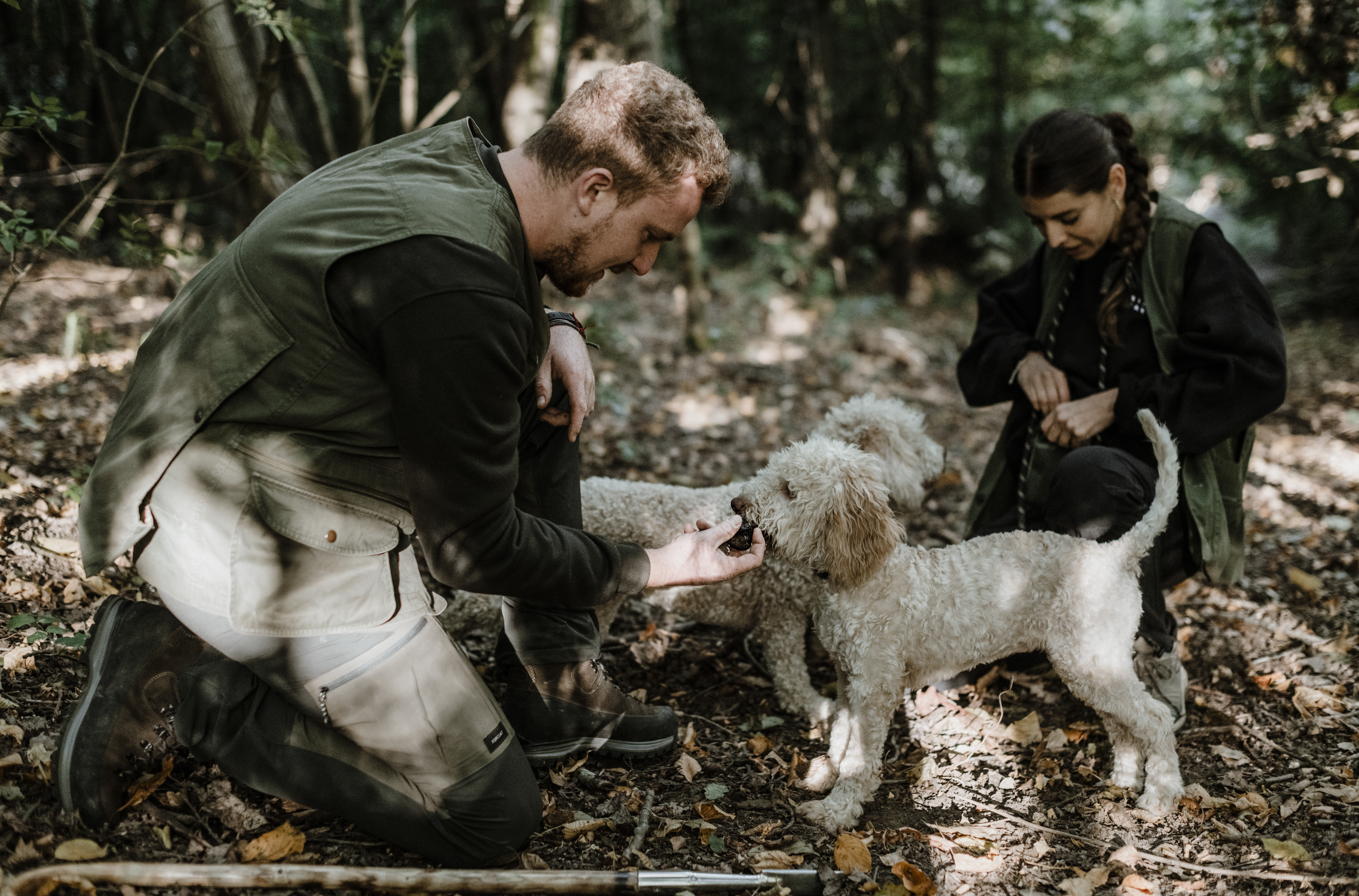
Sustainable tourism is growing more widespread, and rightly so — but amid a swath of environmentally conscious hotels and resorts, a select few have luxury in their DNA. These ultra-eco properties share a deep passion and responsibility for their environment and local communities, and a desire to light the spark of a similar passion in all who stay with them without compromising on their splendor.
Nature’s Caretakers
Landscaping at Post Ranch Inn focuses on native plantings to restore the natural ecosystem. Image credit: Post Ranch Inn
By Laura Evans
Luxury Meets Sustainability
Experiences
BY Kate Mann
Munich
In the Neighborhood
Volume 22 2023
Expert truffle hunters and their Lagotto Romagnolo dogs at Casa di Langa. Image credit: Casa di Langa
plover nests, and when the knotweed-munching goats make an appearance at cocktail parties, guests interact with them and incidentally learn about the importance of rewilding coastal environments. “It’s just fun, whimsical programming that opens up the conversation about bigger issues,” says Kew.
Even more important is practicing what you preach. While Dromoland Castle runs regular tours of its walled garden, “When I go to the gardens and get my herbs and bring them to the kitchen,” says O’Shea-Stack, “guests are stopping me and asking about them. I think that’s a really good thing for them to see.”
Edgewood Tahoe Resort runs guided nature walks to teach “the importance of being stewards of the land,” while at Carneros Resort and Spa, the “All the Buzz” guest experience emphasizes the importance of bees to community ecosystems, teaching participants about the ancient practice of beekeeping and what they can do to help bees and other pollinators at home “in a fun, immersive way,” says Edward Costa. At Dromoland Castle, a bug hotel and recently completed fairy garden help parents introduce young children to the concept of biodiversity.
Nobody goes on vacation to be lectured, and whether the student is aged 7 or 70, the lessons need to engage and enchant if they’re to succeed. Inn by the Sea is an authority on fun, educational initiatives — take its Bug’s Life Tour, a program in which children create bug costumes and follow the head gardener around “with their little antennae,” as Rauni Kew puts it, peeking into bird’s nests and planting milkweed. Family beach walks with Kew involve “poking around in the tidal pools.” More grownup ecology walks might cover climate change and the fishing industry, with glimpses of piping
“We have to be an inspiration,” says Lefay’s Prandelli. It’s a position shared by many fellow sustainable hoteliers, that part of their responsibility involves teaching guests how to be more sustainable, by example, yes, but in many cases, through out-and-out lessons.
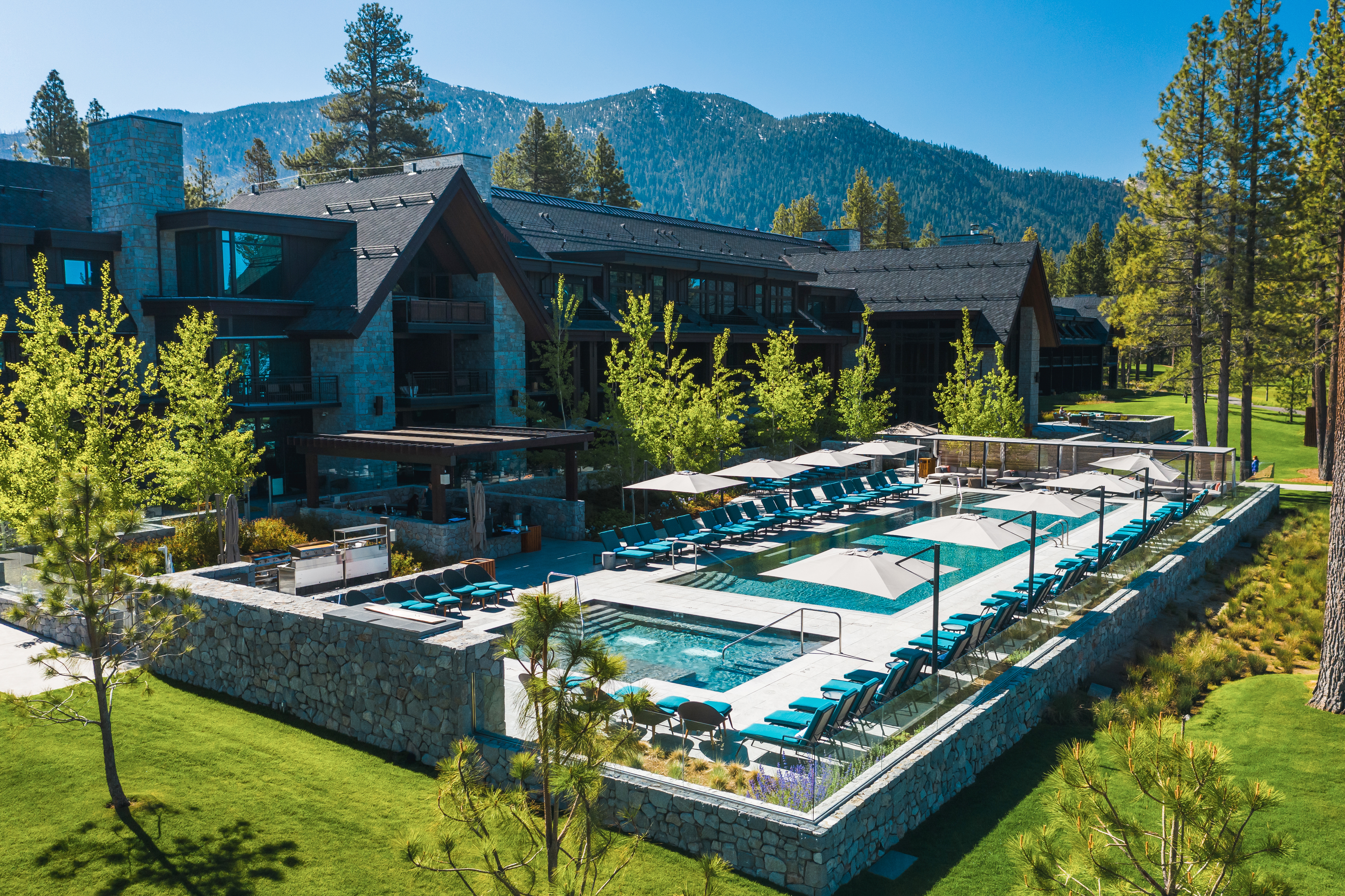
Alpine Lodge at Edgewood Tahoe Resort. Image credit: Edgewood Tahoe Resort
Teach Them Well
“We believe that in leading by example, our guests will become more conscious of their everyday decisions and how they can benefit not only their own well-being, but our planet,” says Jennifer DeVito of Passport Resorts.
Plus, she hopes guests understand that where they stay really does make a difference. “By choosing to stay at Cavallo Point, they have directly participated in our sustainable mission to support the history and welfare of our National Parks and the welfare of local, nonprofit community-based groups.”
Kustermann agrees. He wants to help guests to understand that by staying at Porta Hotel Antigua they are supporting an array of programs that impact the resort, its environment, and the communities that surround it. “One true lesson,” he says, “is that it does matter where you choose to stay.”
For all, the hope is that guests are inspired to make a personal difference, large or small. “I would like guests to leave with the understanding that there are numerous ways to participate in sustainability efforts on an individual level that still have an impact,” says Costa. “These can include planting a garden that you can source fresh produce from, prioritizing recycling and composting at home, and paying close attention to which businesses you support and whether they have implemented ecofriendly practices.”
“Right after we did a program here with the high school, one of the kids called me right away,” says Kew, “and he said, ‘I just noticed outside the cafeteria there’s a spot of dirt. If we put in a pollinator garden, would Inn by the Sea pay for the plants?’ And I said, ‘Sure.’”
Making a big difference just takes a little movement in the direction of sustainability.
When sustainability leaders shout about their principles, it isn’t for self-promotion, they are very intentional about passing on the lessons they’ve learned. So what, above all else, do these greenest of green properties want their guests to leave with? Perhaps using the vintage electric bikes at Cavallo Point makes some think twice about their usual modes of transportation. Maybe the wooden key cards at Dromoland Castle and Edgewood Tahoe Resort prompt a few to reflect on their reliance on single-use plastics. Edgewood Tahoe Resort reports that the cards save 40,000 plastic equivalents per year. Imagine guests who start composting or find places at home to donate excess toiletries to those who need them. Inn by the Sea places small wax paper bags in the baths and invites guests to take their soap home so a usable product won’t end up in a landfill, and Edgewood Tahoe Resort donates partially used bath products to Clean the World, an organization that collects and recycles discarded soap, shampoo, and other hotel toiletries and distributes it to impoverished people, helping prevent millions of hygiene-related illnesses and deaths every year.
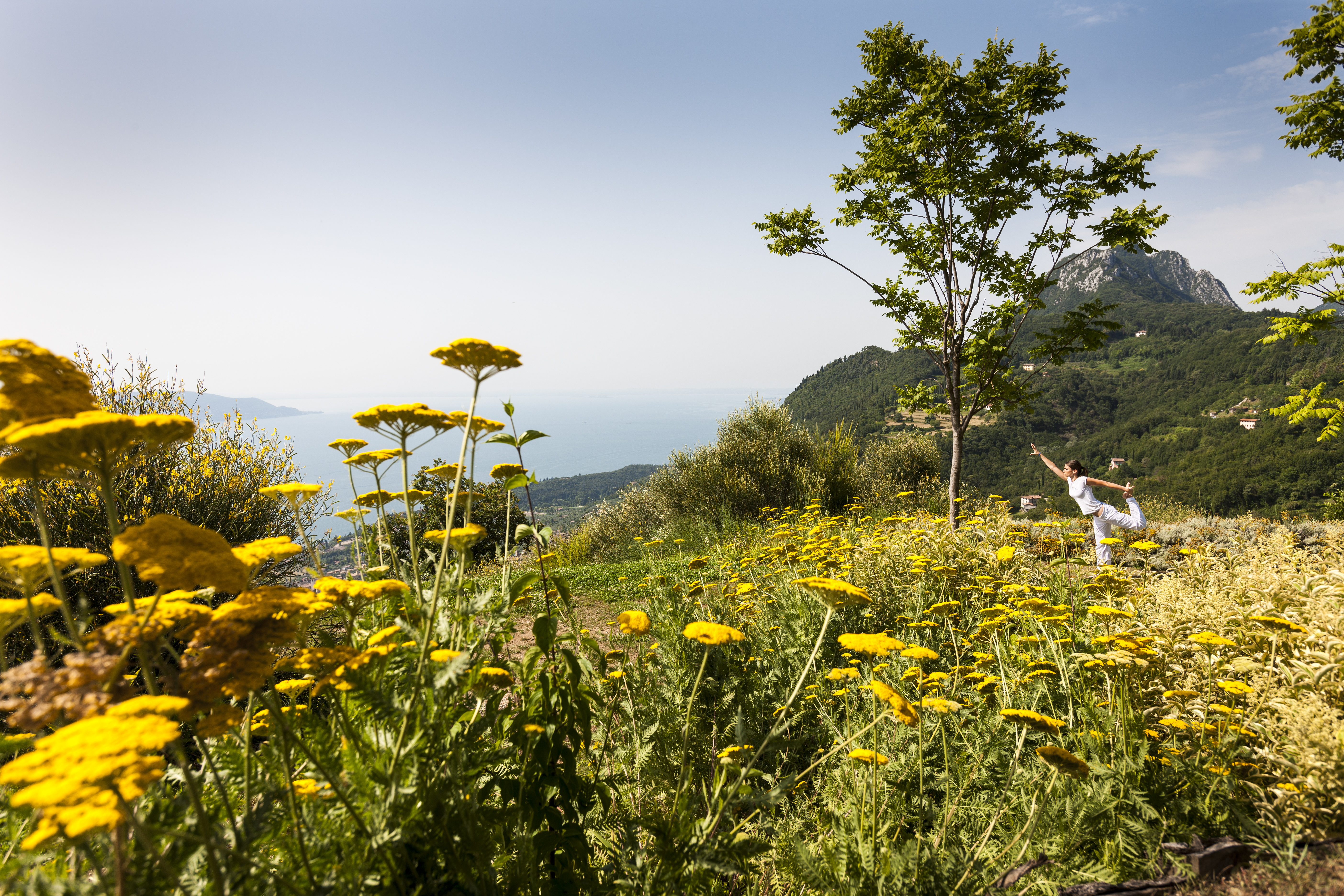
Morning yoga at Lefay Resort & SPA Lago di Garda. Image credit: Lefay Resort & SPA Lago di Garda
The Big Question
When Cavallo Point (Sausalito, California) was restoring the historic Fort Baker facility, builders reused the fort’s construction materials and managed to maintain the historic façade in its entirety, as well as 75% of its interior walls and floors. Nearby, Post Ranch Inn, like Lefay, uses biophilic architecture to connect guests with Big Sur’s wild natural beauty. Stone and reclaimed wood help the buildings blend into their environment, as do living green roofs, which also prevent heat loss; similarly, at Carneros Resort and Spa the galvanized sheet metal roofs don’t just look stunning, they help repel heat.
Other times, it’s better to leave as light a trace as possible. That’s particularly true for architecture — the most inspired sustainable designs use local materials and an intuitive understanding of the landscape to create buildings that blend near-seamlessly into their environments.
“All our properties have been built according to the principles of bio-architecture,” says Mirella Prandelli at Lefay Resort & SPA Lago di Garda in Italy. “They don’t have a big visual impact in the territory where they are located, they are really well integrated. And they are inspired by local and typical buildings.” Structures at this wellness resort on Lake Garda are inspired by the stone-pillared buildings traditionally used for growing lemons and at Lefay Resort & SPA Dolomiti, in the Dolomites, it is the typical mountain huts with A-frame roofs.
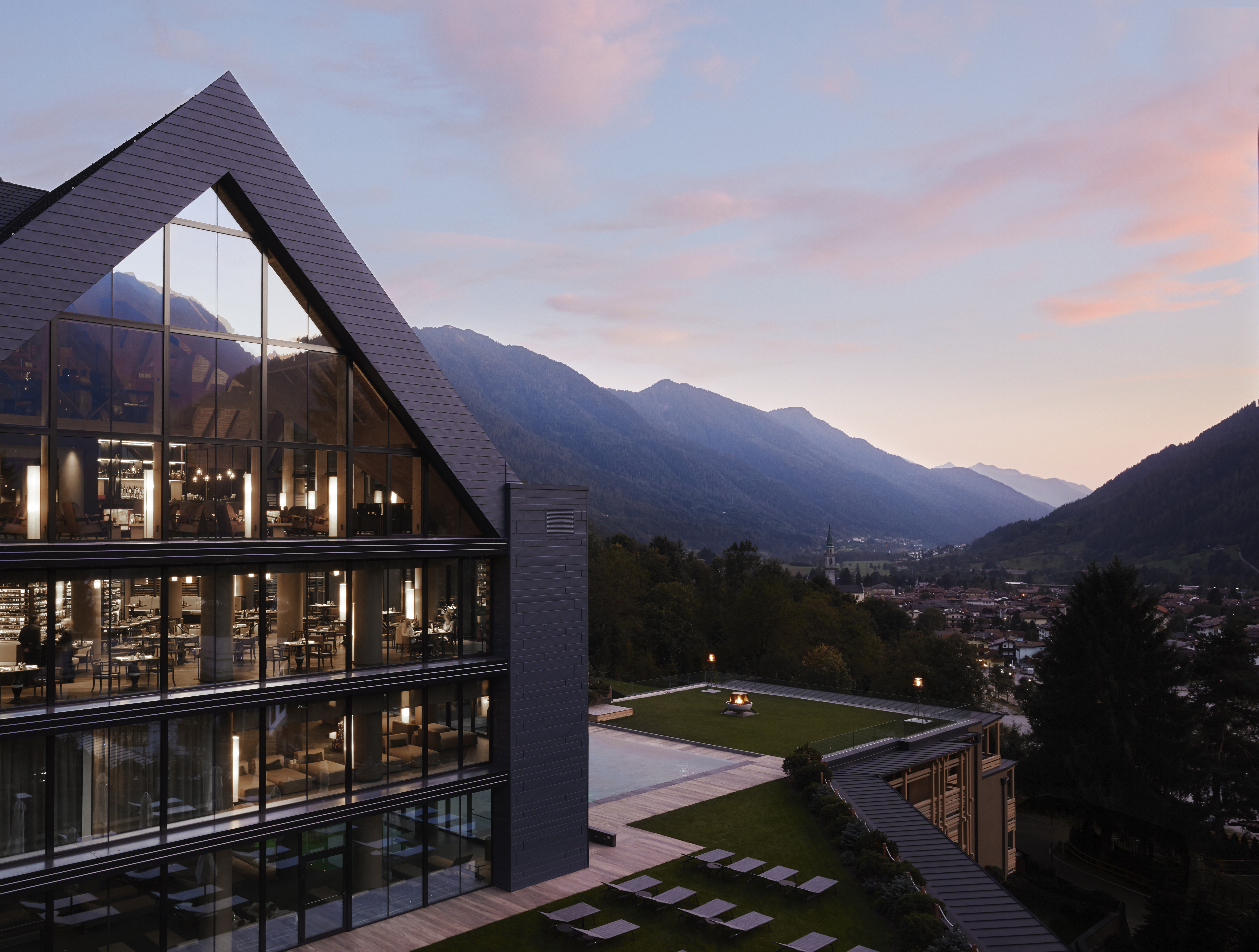
Lefay Resort & SPA Dolomiti Image credit: Lefay Resort & SPA Dolomiti
Conscious Construction

At Dromoland Castle in Ireland (Newmarket-on-Fergus), Fiona O’Shea-Stack says, “I can come into work at six in the morning and pass 20 deer on my way in.” The work the ownership has been doing to nurture its estate is clearly visible. “You can see extra wildflowers coming out, and the wooded area growing better. When you go out and look at a tree and see moss on it, that shows the quality of air is really good here — and guests might not know that, but we do, and it tells us what we’re doing is working.”
Often, the role of caretaker means getting your hands dirty. Nevada’s Edgewood Tahoe Resort has made a commitment to remove 500,000 pounds of sediment per year from Lake Tahoe via enhanced wetlands and deepened filtration settling ponds, while The Palms Hotel & Spa (Miami Beach, Florida) runs regular beach clean-up operations, galvanizing the local community into picking up waste, and its Fill A Bucket program that encourages guests to pitch in year-round. Initiatives like these don’t just serve a moral purpose, but a pragmatic one, points out Katja Janzon. “It’s our bread and butter. Without beautiful beaches and beautiful water, we’re not going to be here.”
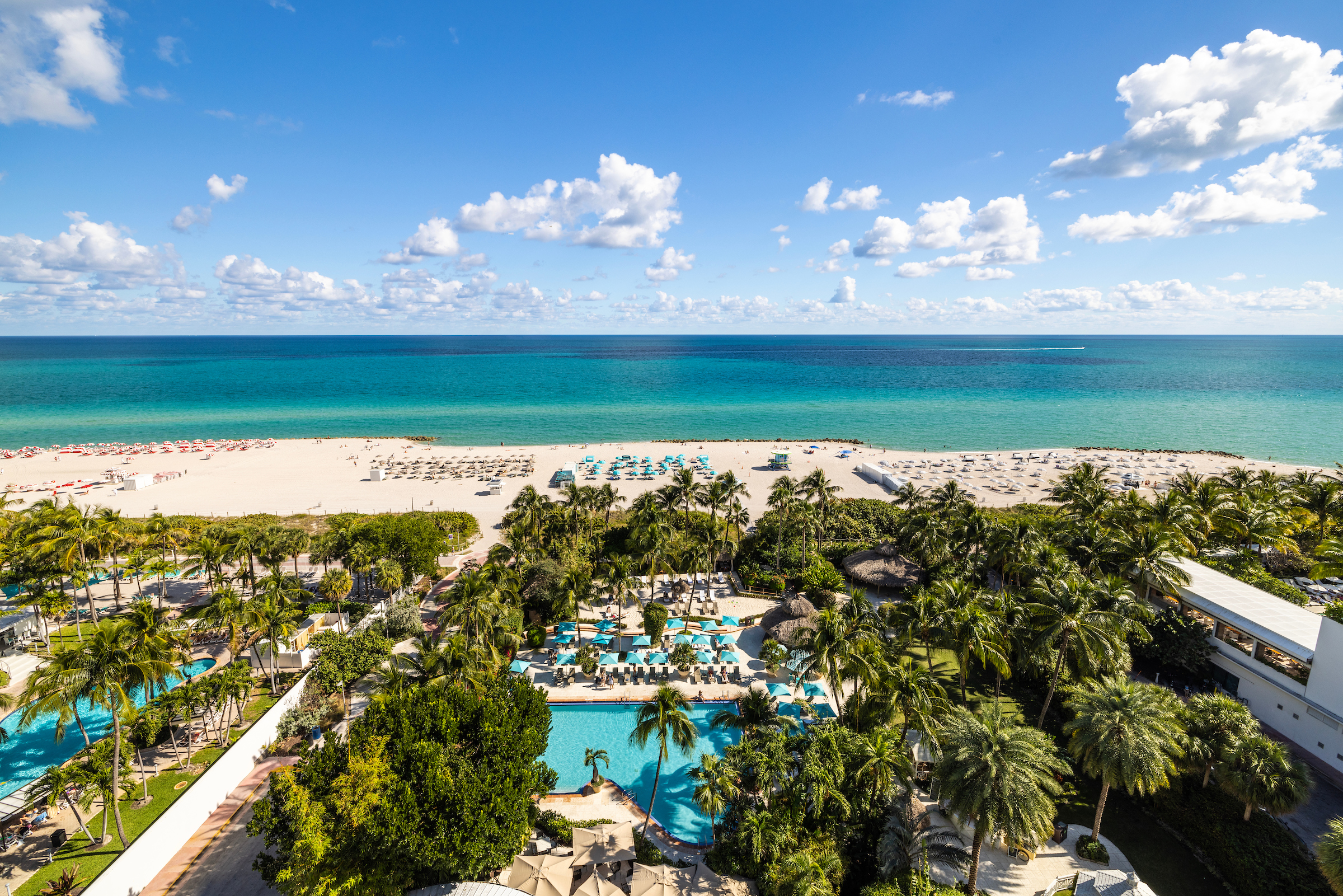
The Palms Hotel & Spa protects its beachfront. Image credit: The Palms Hotel & Spa
This duality of purpose is one of the hallmarks of a sophisticated sustainability operation, in which something can be both beautiful and functional — beneficial not just for the property, the local area, or the planet, but all three at once. As Mike Freed, co-founder and Managing Director of Passport Resorts, which manages Post Ranch Inn and Cavallo Point, points out, staff housing on-site isn’t solely for the benefit of the staff — it means fewer cars on the roads, which makes for lower emissions and less of an impact on local traffic. It’s indicative of a well-thought-through approach that has evolved sensibly and organically over time — about as far as you can get from greenwashing, a term used disparagingly for flashy initiatives that pay lip service to sustainability but have little positive impact.

Accommodations at Post Ranch Inn use biophilic architecture. Image credit: Post Ranch Inn
Likewise, it isn’t enough to have a single sustainability officer banging the drum. To truly walk the walk, everyone in an organization needs to subscribe to its sustainable ethos. At Inn by the Sea, “The entire staff celebrates the first time [in a season] we have eggs on milkweed,” says Kew, “or every time we find larvae.”
In an industry with a notoriously high staff turnover, creating this culture of sustainability is “one of the most difficult challenges,” admits O’Shea-Stack. She’s found giving colleagues responsibility — her handpicked team of Green Champions are her “soldiers on the ground” — and one-on-one training has made all the difference. “Now [that] they know why we’re doing it, they want to be part of it.”
That sort of engagement makes all the difference — and not just to guests. For Andreas Kustermann of Porta Hotel Antigua in Guatemala, “We are most proud of how involved everyone in the company has become. So much so, that many of the team members have applied some initiatives in their own households or within their neighborhoods.”
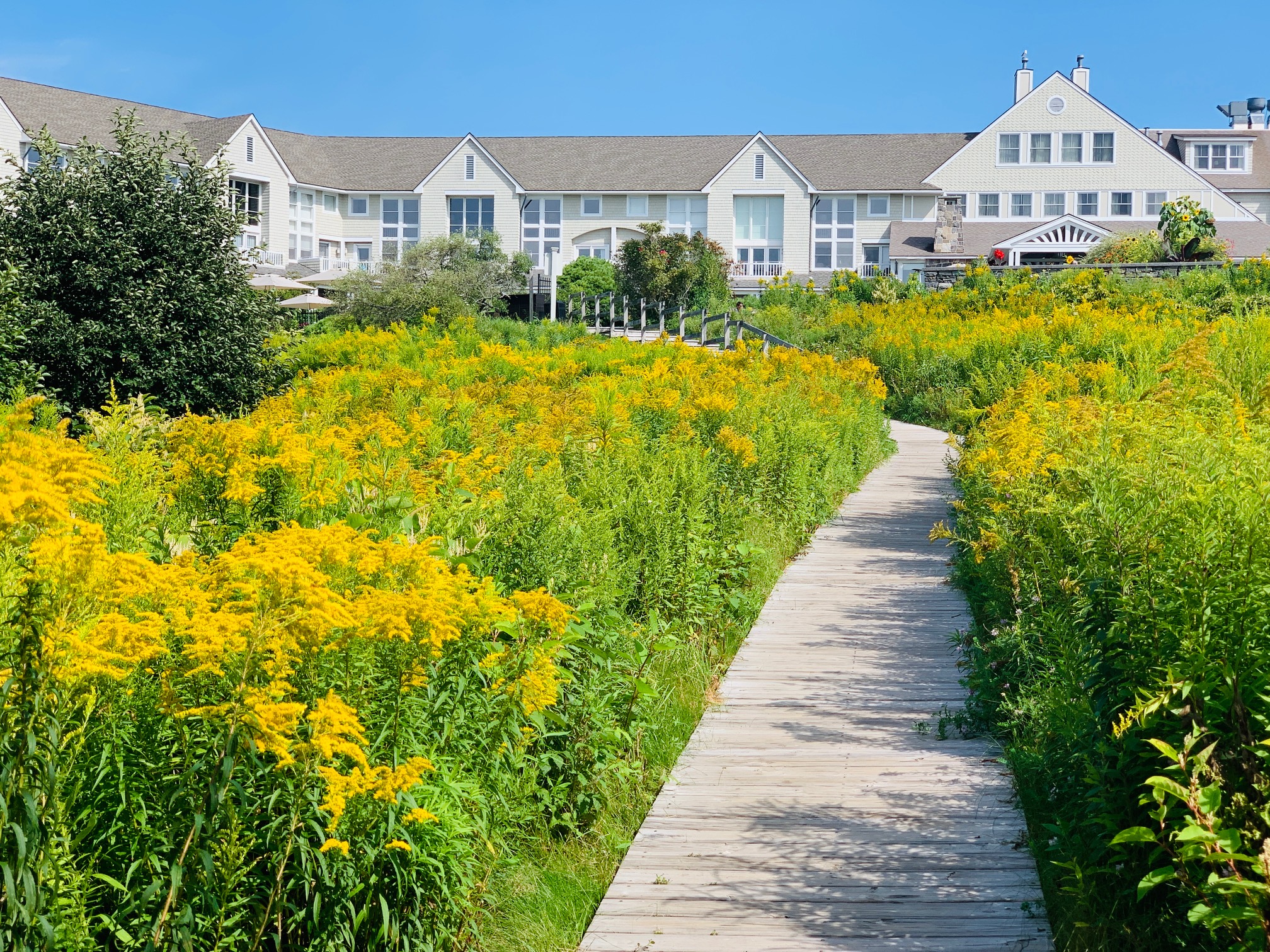
Beach path at Inn by the Sea. Image credit: Inn by the Sea
August 2023 (Volume 22)
Talk to hoteliers at the vanguard of sustainable tourism, and one thing shines through again and again: their deep-rooted sense of responsibility not just toward the planet, but their immediate surroundings. Working and living in a place of incredible natural beauty places them in a position of stewardship, with a duty not only to leave no trace, but to actively nurture that environment.
Supporting biodiversity doesn’t necessarily mean letting nature have its way, but giving it a helping hand
Stone and reclaimed wood help the buildings blend into their environment, as do living green roofs
Supporting biodiversity doesn’t necessarily mean letting nature have its way, but giving it a helping hand
The Cavallo Point Fund requests an optional $3 donation per guest, per night to support local nonprofits, such as the Marine Mammal Center and Conscious Kitchen, a school dining program that addresses food equity in local schools. Carneros Resort and Spa supports the Napa Valley Community Foundation, whose outreach efforts include donating food and produce to areas devastated by local wildfires, as well as education and equity initiatives, including a Diversity in Wine program.
Charlotte & Co, the boutique at Dromoland Castle, draws on the property’s heritage and a focus on the best of contemporary Irish design and craftsmanship, from fashion and linens to jewelry. Likewise, the shop at Porta Hotel Antigua is stocked almost exclusively with locally produced goods, and the hotel invites local artisans to special market days.
Imagine guests who start composting or find places at home to donate excess toiletries to those who need them
Giving back to local neighborhoods and organizations is another central tenet of the “greener than green” philosophy. This might be in the form of volunteer work, collaborations with local nonprofits, promoting local artists and makers, or all of the above. Or something else entirely, such as the “Books for a Booking” program at Inn by the Sea, and Porta Hotel Antigua’s “Cook for Hope” program, which provides scholarships to area residents, enabling them to enter the local tourism industry workforce with an accredited diploma in just eight months.
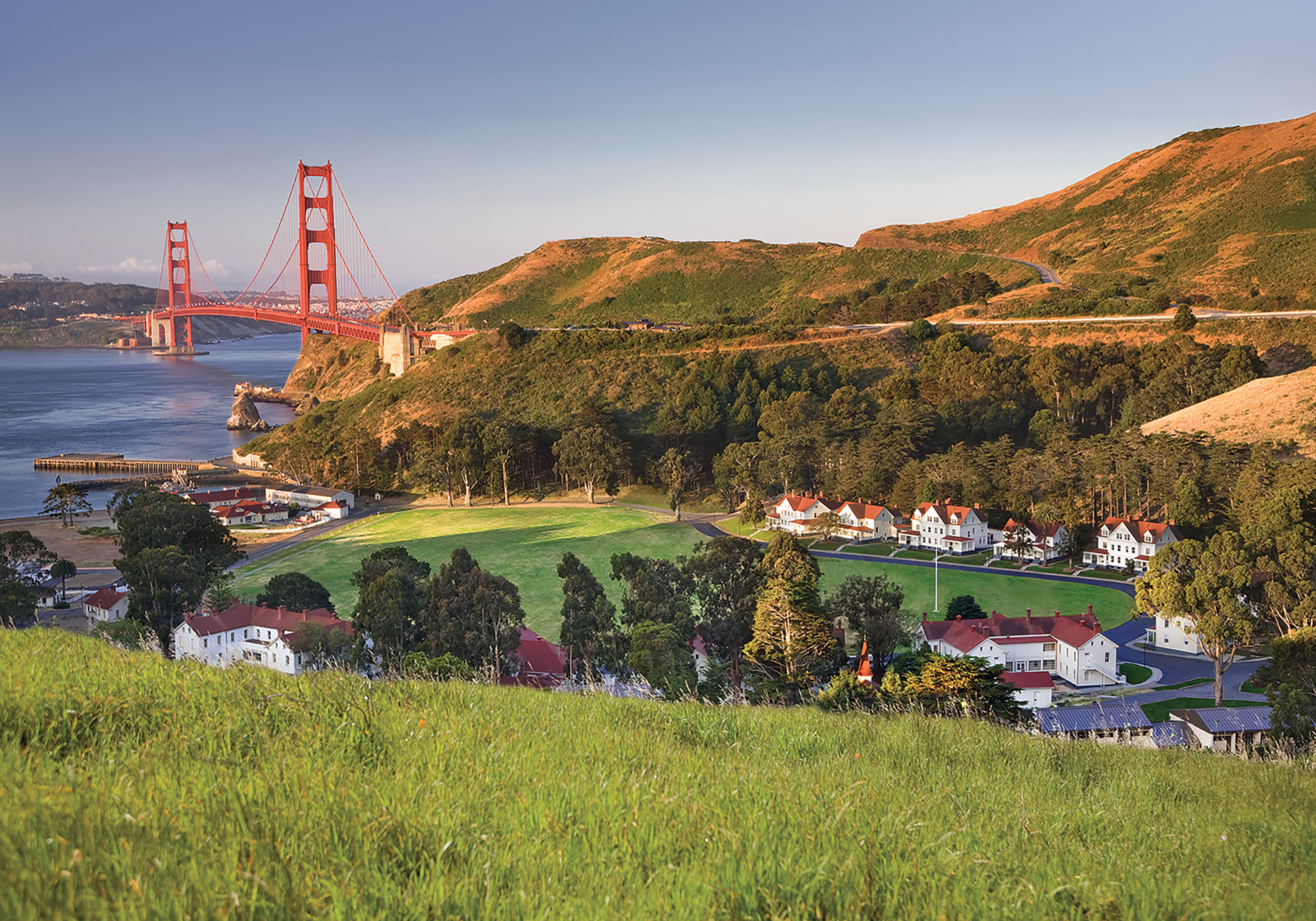
View of historic Cavallo Point. Image credit: Cavallo Point
Community Spirit
When you start considering its impact on the community as part of the measure of a hotel’s sustainability, some things become doubly meaningful — like locally sourced produce. Suddenly, it’s not just about food miles and emissions, it’s also about supporting local businesses. At Casa di Langa, “Our chef personally takes care of the search for suppliers who are exclusively from the area,” says Candelich. “If not from the Alta Langa where we are located, at least from the Piedmont region.” The cheeses served in the restaurant, she adds, come from goat and sheep farmers who practice “rotational grazing,” an approach that protects both the animals and the flora of the hills.
Beyond using fresh eggs from resident chickens, Carneros Resort and Spa’s three restaurants use organic, seasonal ingredients from small regional farms, as well as its own culinary garden, and the wine lists feature stellar local varietals from the surrounding wine country.
These destinations are part of the diverse portfolio of Beyond Green, a brand committed to delivering exceptional luxury travel experiences, protecting our planet’s natural resources and cultural heritage, and enhancing the well-being of their local communities. Get inspired by these sustainable hospitality leaders around the world.
Planet Earth’s Most Sustainable Hotels
More Inspiration
Read More
Recipe for Contentment
Learn more about the chef, restaurateur, and author

Life & Arts
Read More
Winter Wonderland
Head to the snow for adventures in our pick of wintry destinations

Destinations
Incredible India
A journey through this remarkable country
Destination: India

Read More
From Kuala Lumpur to Kota Kinabalu
Experience the magic of Malaysia from its capital to ...
Destination: Malaysia

Read More
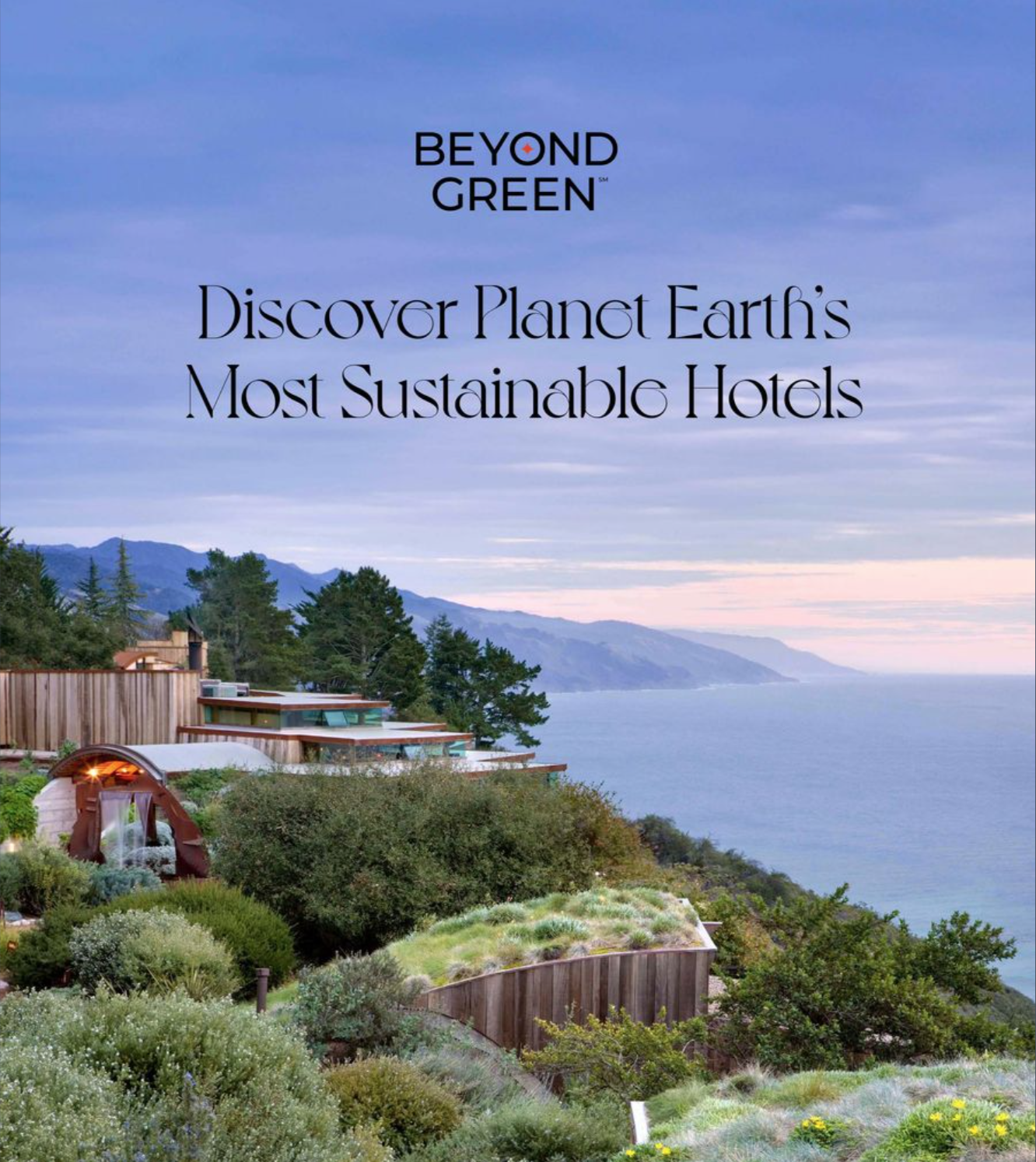
Explore Beyond Green

“We believe that in leading by example, our guests will become more conscious of their everyday decisions and how they can benefit not only their own well-being, but our planet,” says Jennifer DeVito of Passport Resorts.
Plus, she hopes guests understand that where they stay really does make a difference. “By choosing to stay at Cavallo Point, they have directly participated in our sustainable mission to support the history and welfare of our National Parks and the welfare of local, nonprofit community-based groups.”
Kustermann agrees. He wants to help guests to understand that by staying at Porta Hotel Antigua they are supporting an array of programs that impact the resort, its environment, and the communities that surround it. “One true lesson,” he says, “is that it does matter where you choose to stay.”
For all, the hope is that guests are inspired to make a personal difference, large or small. “I would like guests to leave with the understanding that there are numerous ways to participate in sustainability efforts on an individual level that still have an impact,” says Costa. “These can include planting a garden that you can source fresh produce from, prioritizing recycling and composting at home, and paying close attention to which businesses you support and whether they have implemented ecofriendly practices.”
“Right after we did a program here with the high school, one of the kids called me right away,” says Kew, “and he said, ‘I just noticed outside the cafeteria there’s a spot of dirt. If we put in a pollinator garden, would Inn by the Sea pay for the plants?’ And I said, ‘Sure.’”
Making a big difference just takes a little movement in the direction of sustainability.
Supporting biodiversity doesn’t necessarily mean letting nature have its way, but giving it a helping hand. The expansive estate of Casa di Langa (Cerretto Langhe, Italy) includes working vineyards, as well as a protected area managed to encourage natural truffle production — and a philosophy that combines sustainable and regenerative agriculture. “Here, we never work ‘against’ the plants, but always with them, to regenerate the soil,” says Eva Codina Candelich. “This helps the entire natural ecosystem, starting with the extremely precious pollinators, such as bees.”
At Carneros Resort and Spa (Napa, California), native, drought-tolerant plants work alongside a rainwater catchment to help conserve the region’s precious water; while some 200 miles south, the team at Post Ranch Inn (Big Sur, California) has planted more than 150 redwoods and native oaks, and 90% of the estate’s 100 acres are open space, given over to the protection of threatened and endangered species, including the Smith’s blue butterfly, California red-legged frog, and California condor.
At Dromoland Castle in Ireland (Newmarket-on-Fergus), Fiona O’Shea-Stack says, “I can come into work at six in the morning and pass 20 deer on my way in.” The work the ownership has been doing to nurture its estate is clearly visible. “You can see extra wildflowers coming out, and the wooded area growing better. When you go out and look at a tree and see moss on it, that shows the quality of air is really good here — and guests might not know that, but we do, and it tells us what we’re doing is working.”
Often, the role of caretaker means getting your hands dirty. Nevada’s Edgewood Tahoe Resort has made a commitment to remove 500,000 pounds of sediment per year from Lake Tahoe via enhanced wetlands and deepened filtration settling ponds, while The Palms Hotel & Spa (Miami Beach, Florida) runs regular beach clean-up operations, galvanizing the local community into picking up waste, and its Fill A Bucket program that encourages guests to pitch in year-round. Initiatives like these don’t just serve a moral purpose, but a pragmatic one, points out Katja Janzon. “It’s our bread and butter. Without beautiful beaches and beautiful water, we’re not going to be here.”
Sustainable tourism is growing more widespread, and rightly so — but amid a swath of environmentally conscious hotels and resorts, a select few have luxury in their DNA. These ultra-eco properties share a deep passion and responsibility for their environment and local communities, and a desire to light the spark of a similar passion in all who stay with them without compromising on their splendor.
At Inn by the Sea in Cape Elizabeth, Maine, this “privileged spot” overlooking the dunes and ocean, surrounded by a wooded state park, inspires its passion for sustainability. Every part of the gardens has been planted with local ecosystems in mind: blueberry bushes, fir trees, and native rosebushes create valuable habitat and food sources, while other areas have been given over to wildlife entirely — such as the “rabbitat,” created by the inn as a home for New England cottontails, a severely endangered species of rabbit discovered nearby in 2006. The inn is also midway through a seven-year experiment, bringing in herds of goats every summer to chomp their way through invasive Japanese knotweed.





Edgewood Tahoe Resort runs guided nature walks to teach “the importance of being stewards of the land,” while at Carneros Resort and Spa, the “All the Buzz” guest experience emphasizes the importance of bees to community ecosystems, teaching participants about the ancient practice of beekeeping and what they can do to help bees and other pollinators at home “in a fun, immersive way,” says Edward Costa. At Dromoland Castle, a bug hotel and recently completed fairy garden help parents introduce young children to the concept of biodiversity.
Nobody goes on vacation to be lectured, and whether the student is aged 7 or 70, the lessons need to engage and enchant if they’re to succeed. Inn by the Sea is an authority on fun, educational initiatives — take its Bug’s Life Tour, a program in which children create bug costumes and follow the head gardener around “with their little antennae,” as Rauni Kew puts it, peeking into bird’s nests and planting milkweed. Family beach walks with Kew involve “poking around in the tidal pools.” More grownup ecology walks might cover climate change and the fishing industry, with glimpses of piping plover nests, and when the knotweed-munching goats make an appearance at cocktail parties, guests interact with them and incidentally learn about the importance of rewilding coastal environments. “It’s just fun, whimsical programming that opens up the conversation about bigger issues,” says Kew.
Even more important is practicing what you preach. While Dromoland Castle runs regular tours of its walled garden, “When I go to the gardens and get my herbs and bring them to the kitchen,” says O’Shea-Stack, “guests are stopping me and asking about them. I think that’s a really good thing for them to see.”



read more
Winter Wonderland
Head to the snow for adventures in our pick of wintry destinations
Destinations

read more
Recipe for Contentment
Learn more about the chef, restaurateur, and author
Life & Arts

More Inspiration

Where To Stay
View All Issues
Life & Arts
Food & Drink
Experiences
Inspiration
Middle East & Africa
Central & South America
Caribbean
Asia & Pacific
Europe
North America
Top Destinations
Destinations



Download the App




#ThePreferredLife
Travelers
Best Rate Guarantee
About Us
Philanthropy
Careers
Global Directory
American Destinations
International Destinations
Destinations
Partners & Press
Preferred Meetings & Events
Press Center
Travel Partners
Travel Professionals
Become a Member Hotel
Become an Alliance Partner
PreferredNet
Offers
Discover Offers
I Prefer Gift Cards
* Actual rate may vary based on date, room type, and availability. Enter dates to determine more accurate rates for your search.
Copyright © 2025 Preferred Travel Group
SM
Cookies & Privacy Policy | Terms of Use | Modify a Reservation

1 (866) 990-9491
International Phone Lines







Cookies & Privacy Policy | Terms of Use | Modify a Reservation

1 (866) 990-9491
Travelers
Best Rate Guarantee
About Us
Philanthropy
Careers
Global Directory
American Destinations
International Destinations
Destinations
Partners & Press
Preferred Meetings & Events
Press Center
Travel Partners
Travel Professionals
Become a Member Hotel
Become an Alliance Partner
PreferredNet
Offers
Discover Offers
I Prefer Gift Cards
* Actual rate may vary based on date, room type, and availability. Enter dates to determine more accurate rates for your search.
Copyright © 2025 Preferred Travel Group
SM




#ThePreferredLife